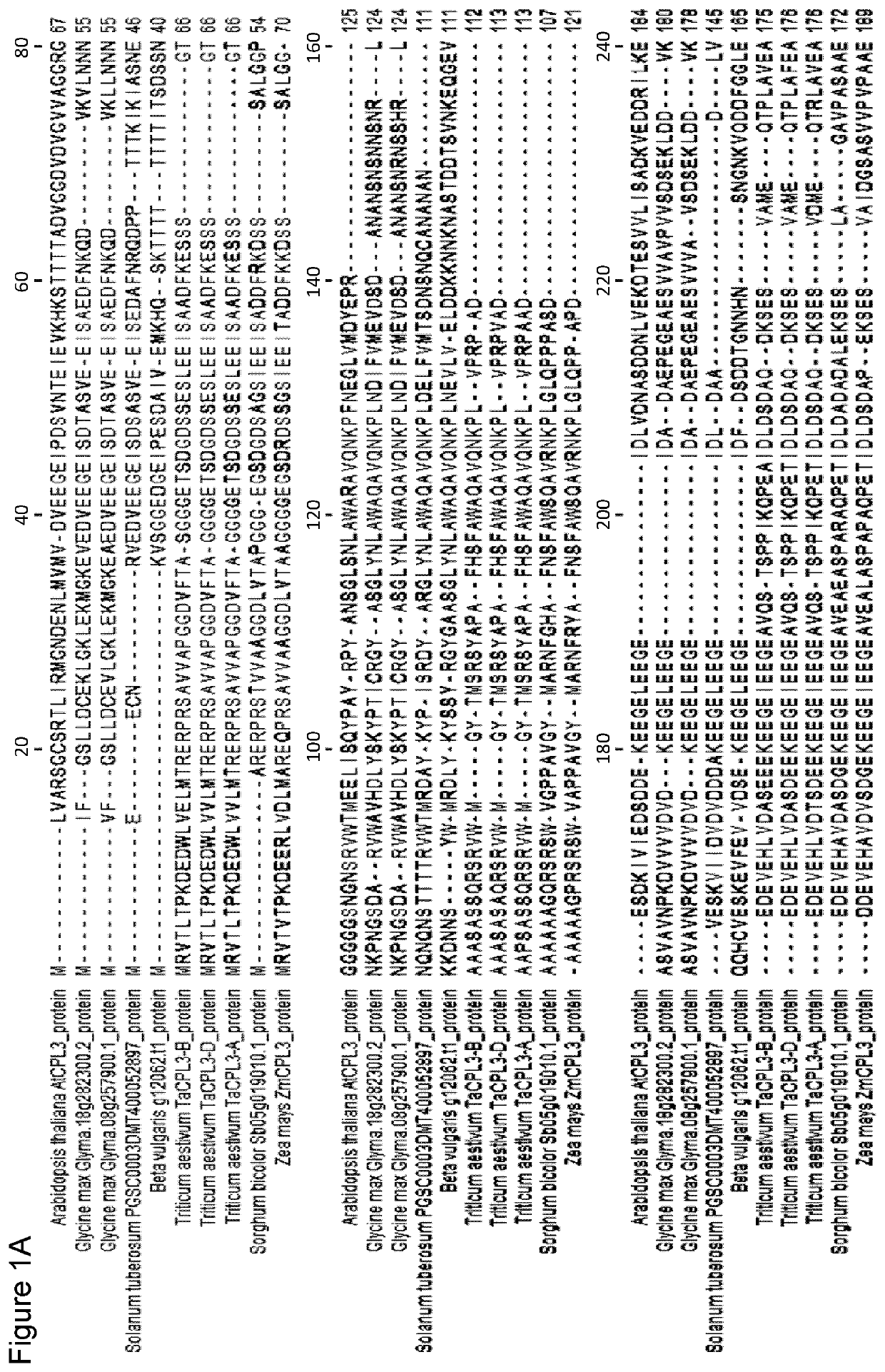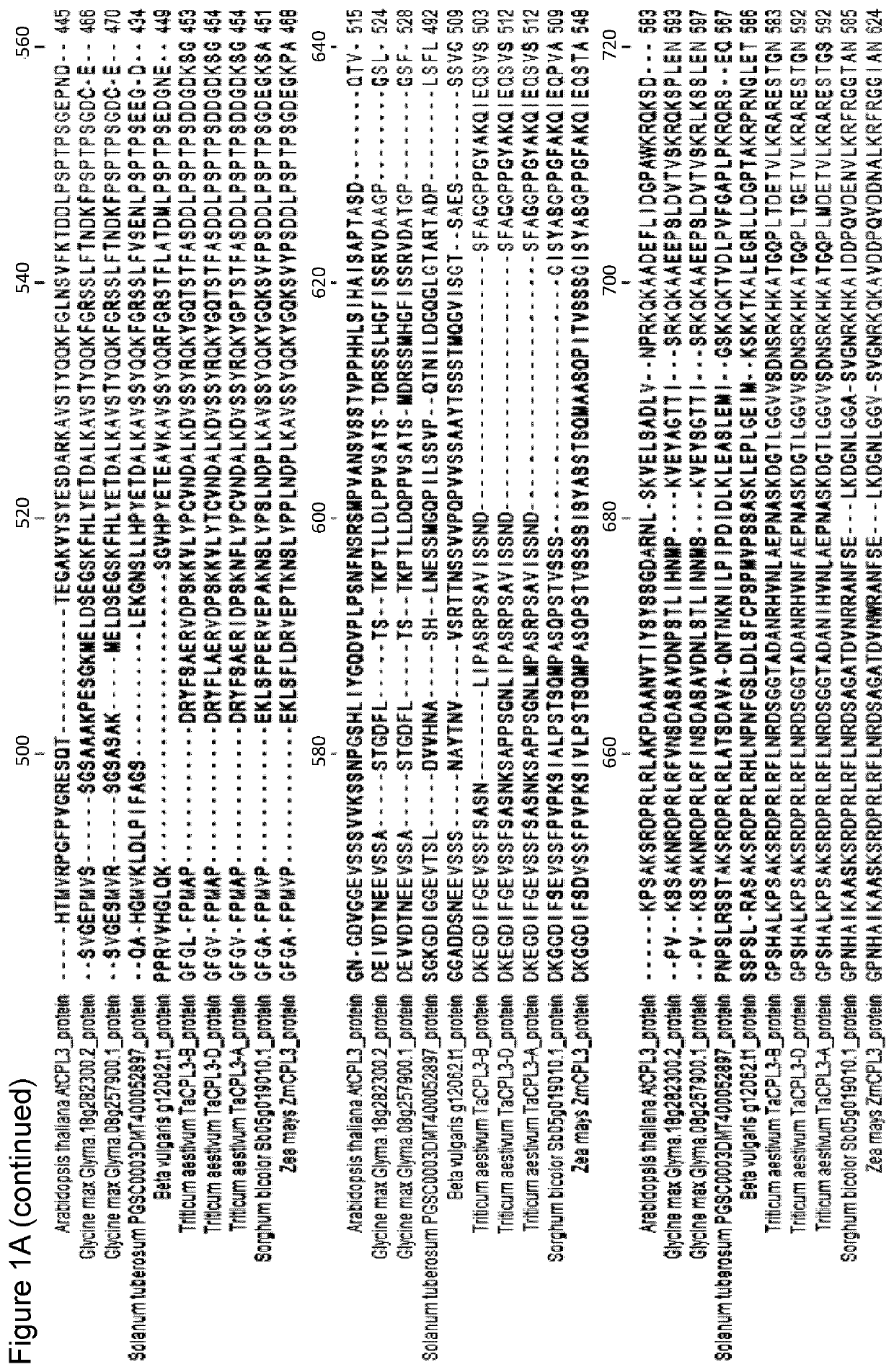Pathogen resistance in crop plants
a technology of pathogen resistance and crop plants, applied in the field of plant biotechnology, can solve the problems of most severe losses of major crop plants worldwide, significant crop losses of cultivated plants, and crop losses that have not been significantly reduced, and achieve the effects of enhancing the pathogen resistance in the plant, conferring or increasing the resistance, and reducing the expression rate of the on
- Summary
- Abstract
- Description
- Claims
- Application Information
AI Technical Summary
Benefits of technology
Problems solved by technology
Method used
Image
Examples
example 2b
nock-Out of the Maize CPL3 Gene
[0158]The Zm-CPL3 sequence, A188v1_046614, was used for gene knock-out by CRISPR genome editing. In this case it has been looked for an active target site in the predicted Zm-CPL3 open reading frame (ORF) that would generate a targeted double-stranded break in the DNA. The desired outcome was DNA repair at the cut site by the NHEJ pathway leading to random deletion and / or insertions (INDELs) that could interrupt the normal coding sequence of the Zm-CLP3 gene. Target site activity was assayed initially by using amplicon deep sequencing and next generation sequencing (NGS—Illumina sequencing) to measure the DNA cutting frequency in maize protoplasts. The NGS data was used to identify and then select an individual target site with adequate activity for use in a maize tissue culture and transformation system for recovery of plants. Maize plants were generated after transformation with the selected target site and CRISPR constructs that demonstrated a varie...
example 4
regulation—Effect in Pathogen Resistance
[0165]Given the central role of CPL3 identified herein, the potential of CPL3 modulation in different target plants was addressed. First, relevant target crop plants of economic and agronomic interest were defined. As a next step, the most severe pathogens from all taxa, in part very specific for certain target plants, were defined. To test whether CPL3 modulation can be advantageous for enhanced pathogen resistance against a variety of pathogens, including viral, bacterial, oomycete, nematode, insect or fungal pathogens, target pathogen types and the correlated diseases will thus be studied in various plant models to define the extent of CPL3 modulation needed and the specific way of CPL3 modulation needed (i.e., on RNA level and / or DNA level or even protein level) to achieve enhanced pathogen resistance by biological rather than chemical means for a several plant pathogens in the respective target plant causing major losses in harvest and cr...
PUM
 Login to View More
Login to View More Abstract
Description
Claims
Application Information
 Login to View More
Login to View More - R&D
- Intellectual Property
- Life Sciences
- Materials
- Tech Scout
- Unparalleled Data Quality
- Higher Quality Content
- 60% Fewer Hallucinations
Browse by: Latest US Patents, China's latest patents, Technical Efficacy Thesaurus, Application Domain, Technology Topic, Popular Technical Reports.
© 2025 PatSnap. All rights reserved.Legal|Privacy policy|Modern Slavery Act Transparency Statement|Sitemap|About US| Contact US: help@patsnap.com



